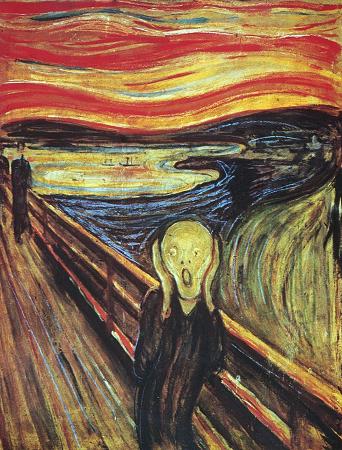Puberty (1893). Oil on canvas. 151 x 110. Puberty is an 1894-95 painting created by Edvard Munch. Munch is an artist native to Norway and is widely known for his role in expressionistic art. Puberty has also been done as a lithograph and an etching by Munch. Although Munch asserted he had not been influenced by the work of Belgium artist/illustrator Félicien Rops, specifically the etching Le Plus Bel Amour De Don Juan, published as an illustration in Jules-Amédée Barbey d'Aurevilly's book Les Diaboliques in 1882, art critics and historians have consistently noted the similarities; beginning with Przybyszewski the first publication ever devoted to Munch. In the late 1880s and into the mid-1890s, Munch, in his mid-twenties, had begun to create his series of Puberty pieces. At this time Munch had already established himself as a notable artist in Berlin. During this period of his life Munch often found residence in Berlin, where his newfound fame and circle of friends were. His new group of friends are attributed for helping push Munch further into his sexually depressed state of mind. Munch allowed this sexual depression to seep into Puberty and like other works he created later this piece was created with symbolism reflecting feelings which continued growing increasingly within the next ten years. This state of sexual depression is one that not only his circle of friends shared with him, but that the psychological scholars had also been curious about having just written the first research on the stages and occurrences of puberty in young adults. Munch's painting Puberty depicts a young naked girl sitting on the edge of a bed. Her legs are pressed together. She holds her hands in front of her body; one lies between her knees, while the other rests on her right thigh. She stares straight ahead with eyes wide open. Her mouth is closed and her long hair hangs down over the shoulders. The light enters from the left, and behind her a dark, ominous shadow is visible. The motif is often regarded as a symbol of anxiety and fear, a young girl's awakening sexuality and the changes a young person experiences physically and psychologically on the path towards adulthood. Arne Eggum has stated in commentary published by The Masterworks of Edvard Munch regarding Munch's Puberty that Munch did not wish to replicate Félicien Rops' 1886 Le Plus Bel Amour De Don Juan. The painting is a duplicate of one that had been earlier destroyed in a fire. Which reiterates the confusion of the original idea in which Munch was inspired to create Puberty. Munch himself feared sex due to the loss of his virginity to his cousin's wife. Puberty was a spark towards the progress of his personal emotional journey in how he portrayed his feelings in his artwork.
more...




